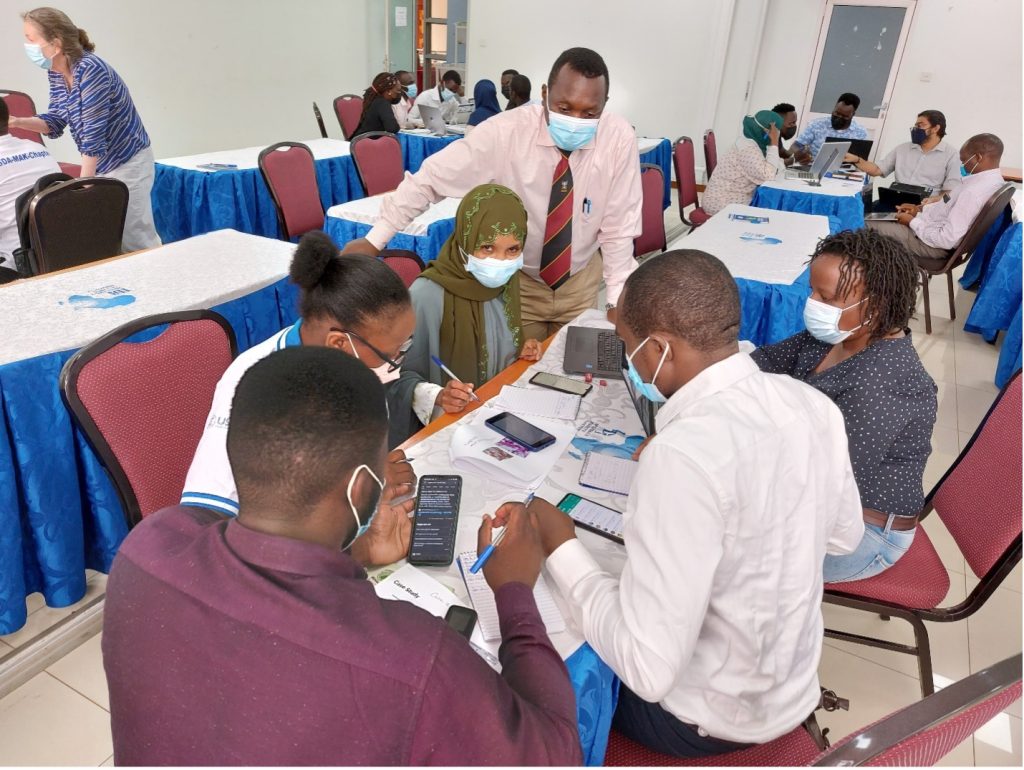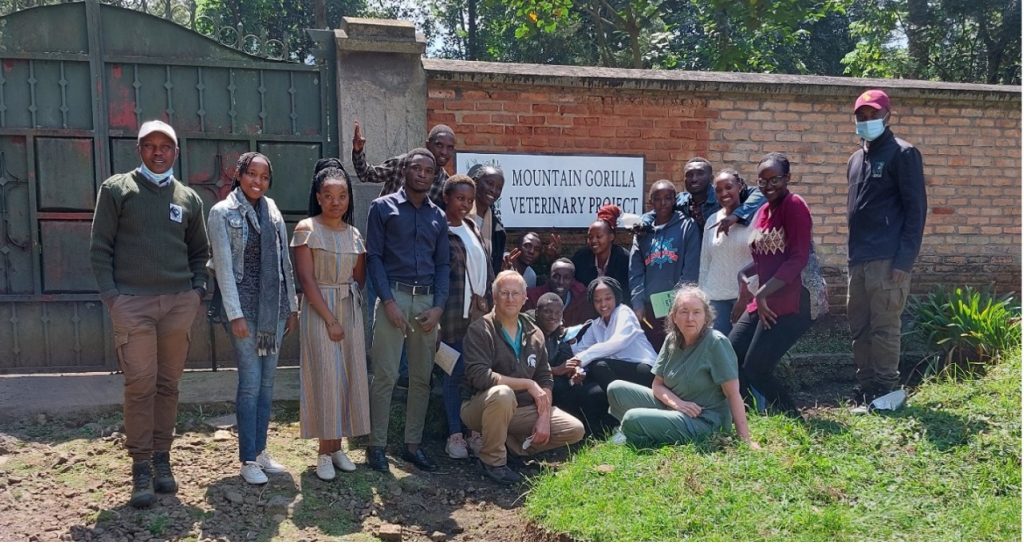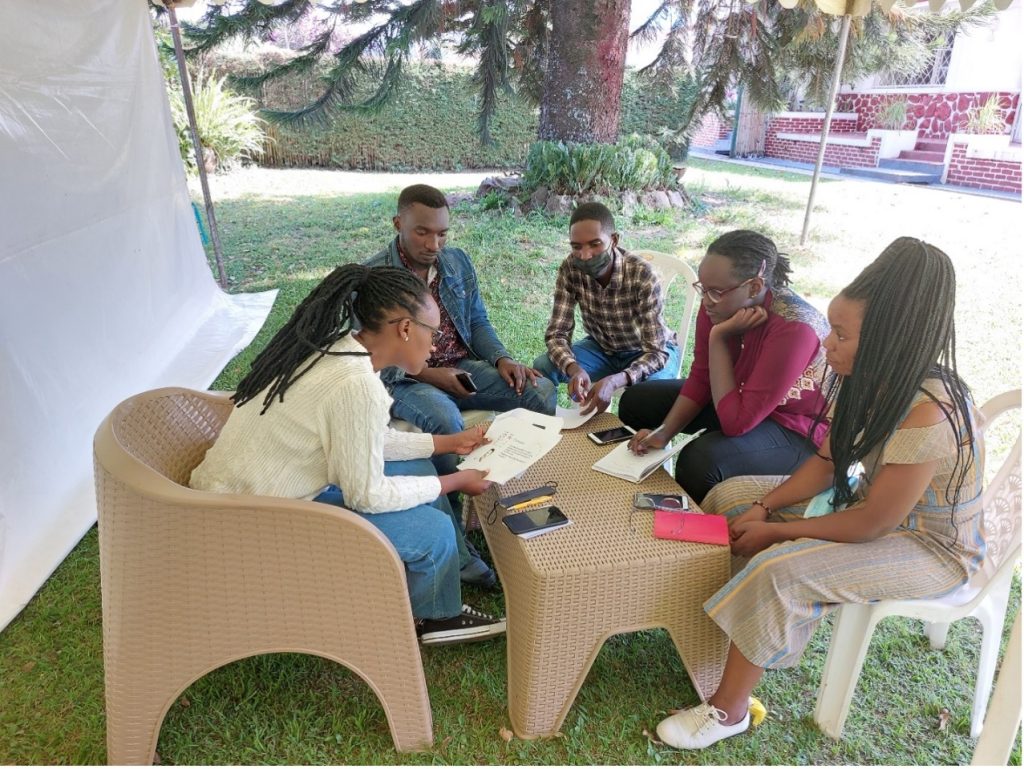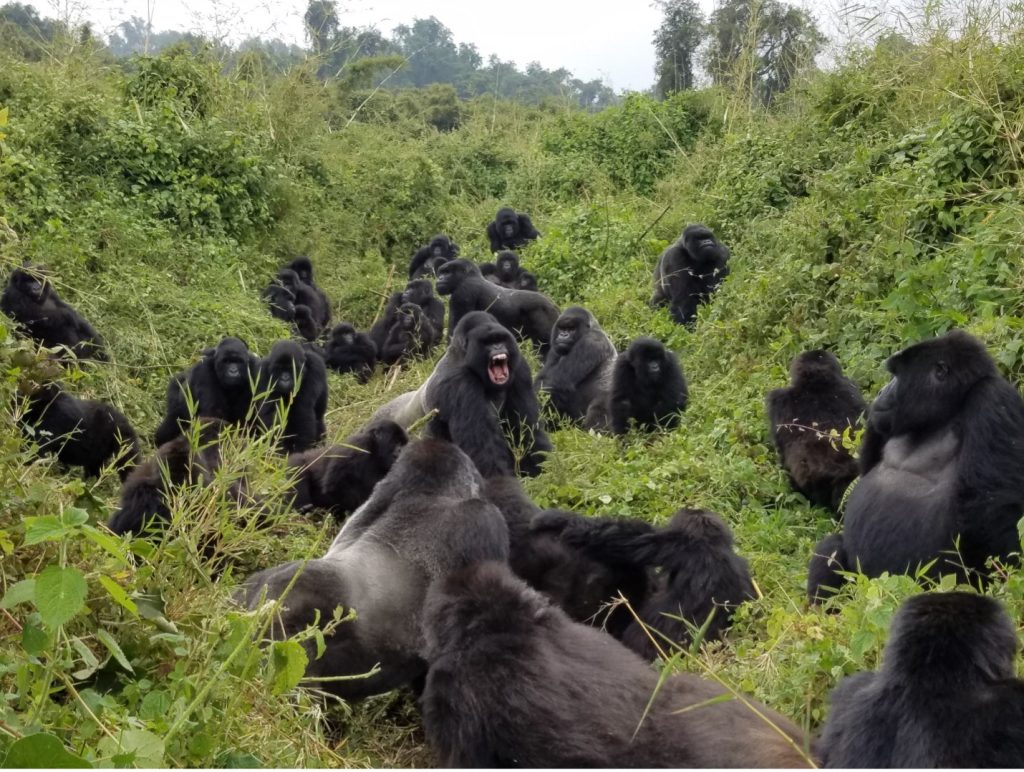Two exciting 2-day workshops were held in Kampala, Uganda and Musanze, Rwanda on 20-21 Jun and 23-24 Jun, respectively, organized and supported by the Davis-Thompson Foundation, the Global Health Pathology Network, Gorilla Doctors, Makerere University, and the University of Rwanda.
The first workshop kicked off with a whole day One Health Human and Veterinary Comparative Pathology Symposium. Teams of veterinary and human medical pathologists, veterinarians, and veterinary and medical students worked through real-life outbreak scenarios involving diseases shared by humans and animals such as anthrax, trypanosomiasis, and viral hemorrhagic fever, and then shared their experiences and conclusions with the larger group in an engaging and educational interactive event. The day was facilitated by Drs. Kathy Gabrielson (MCP Johns Hopkins University), Dalen Agnew (Michigan State University), and Ed Gabrielson (Pathology, Johns Hopkins University), and Drs. Julius Okuni and Robert Lukande from Makerere University. On the second day, veterinary students learned and practiced basic ruminant and poultry prosection techniques and worked through another set of common poultry and small ruminant disease scenarios.


The second workshop held in Musanze, Rwanda at the headquarters of the Gorilla Doctors consisted of a first day of lectures and interactive case studies, including a zoom review of the identification of metazoans in tissue with Dr. Sarah Poynton, and a comprehensive review of primate diseases with Dr. Linda Lowenstine. On the following day, University of Rwanda veterinary students (who had traveled 6 hours to attend), learned and practiced poultry and swine prosection skills, and then returned to Gorilla Doctors HQ for interactive case discussions. These sessions were facilitated by Drs. Gabrielson, Agnew, and Jean Bosco Noheri of the Gorilla Doctors.

After completing their postmortem training, Rwandan veterinary students and Drs. Gabrielson, Agnew, and Noheri pose for a photo outside the original veterinary hospital (Virunga Veterinary Center) built for the mountain gorilla project by Dian Fossey and Dr. Jim Foster in Kinigi, Rwanda.

After the conclusion of the workshop in Rwanda, Dr. Kathy Gabrielson next reviewed 9 gorilla necropsy pathology cases from the last 2 years for Gorilla Doctors in Rwanda. All gorillas that die in the forest are necropsied and cases are read by pathologists from outside of Rwanda. The wearing of masks in the forest when humans observe gorilla groups has reduced the number of respiratory infections that can transmit from humans to gorillas.
Trekking to see the Susa group, Kathy and Ed Gabrielson were fortunate to observe two groups of gorillas (over 40 gorillas) meet and interact. Below is a photo showing some of the 40 gorillas socializing and at least two silverbacks expressing their opinions.

